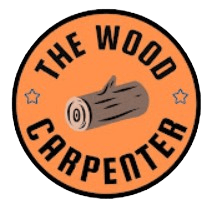
Mulch is very helpful in gardening and landscaping. It helps the soil stay moist, keeps weeds away, controls soil temperature, and makes your garden look nice. Two common types of mulch are rubber mulch & wood mulch. Each has its own good & bad points. This guide will help you understand both so you can choose the right one for your garden.
What Is Rubber Mulch?
Rubber mulch is made from old tires. The tires are cut into small pieces, cleaned to remove any metal, and then colored to look like natural mulch. People use rubber mulch in gardens, playgrounds, and walkways because it lasts a long time and doesn’t need much care. Since it doesn’t break down, you don’t have to replace them often.
What Is Wood Mulch ?
Wood mulch is made from chopped-up tree bark, branches or from the old wood. It’s the traditional mulch that many gardeners like. Over the time, it breaks down and adds healthy nutrients to the soil. Wood mulch looks natural and is great for flower beds, vegetable gardens, and other landscaping areas.
Comparison Table: Rubber Mulch vs Wood Mulch
| Characteristic | Rubber Mulch | Wood Mulch |
| Material | Recycled tires | Natural wood, bark, or wood chips |
| Longevity | 10+ years, does not decompose | 1-3 years, decomposes and requires renewal |
| Nutrient Value | None (does not enrich soil) | Adds nutrients as it breaks down |
| Weed Control | Excellent, tight structure blocks weeds | Good, but decomposes and may create gaps |
| Moisture Retention | Reduces evaporation, but less than wood | Superior moisture retention |
| Pest/Fungi Issues | Unattractive to pests/fungi | May attract insects, termites, and fungi |
| Safety | No splinters, safer for playgrounds | Splinter risk, especially in certain areas |
| Environmental Impact | May leach chemicals, not biodegradable | Biodegradable and eco-friendly |
| Aesthetics | Uniform, available in bright or natural colors | Natural look, limited color range |
| Cost | $80-$160 per cubic yard | $30-$110 per cubic yard |
| Maintenance | Minimal, occasional top-up for displaced mulch | Needs annual replenishment |
In-Depth Analysis
1. Durability and Maintenance
Rubber mulch lasts a very long time—more than 10 years in many cases. It doesn’t break down, blow away easily or get packed down like a natural mulch. You usually don’t need to replace it often, just refill small spots if the wind or heavy foot traffic moves it.
Wood mulch is cheaper at first but doesn’t last as long. It breaks down naturally and becomes part of the soil, which is good, but this also means you’ll need to replace it every 1 to 3 years depending on the weather and location.
2. Soil Health and Fertility
Rubber mulch doesn’t help your soil since it’s not made from natural materials. It might even slow down how well natural things mix into the soil.
Wood mulch adds the nutrients to the soil as it breaks down. It also helps the soil become healthier by feeding good microorganisms that support plant growth.
3. Weed Control
Rubber mulch does a great job at keeping weeds out because it forms a thick layer that weeds can’t easily grow through.
Wood mulch also blocks weeds well, especially if you put down a thick layer. But as it breaks down, gaps can form, letting weeds grow unless you add more mulch regularly.
4. Moisture Retention
Wood mulch is better at maintaining the moisture in the soil. It soaks up water and slows down evaporation, which is great for gardens and delicate plants.
Rubber mulch doesn’t soak up water, but it still helps by blocking sunlight and reducing evaporation, keeping the soil from drying out too quickly.
5. Pests and Fungus
Rubber mulch doesn’t attract bugs or fungus, making it a good choice where termites or ants are a problem. It’s also safer for playgrounds since it doesn’t splinter and has a soft surface.
Wood mulch can attract insects like termites and ants, and may also grow fungus, especially in wet areas. This can be a problem if used near wooden buildings.
6. Environmental Impact
Rubber mulch is made from old tires, which helps reduce waste, but it doesn’t break down naturally and may release chemicals into the soil over time.
Wood mulch is natural and biodegradable, meaning it breaks down safely. When bought from good sources, it also supports environmentally friendly forestry.
7. Cost and Installation
Wood mulch is cheaper to buy and easy to spread in your yard. It also looks very natural in most garden designs.
Rubber mulch costs more at first, but you save money later since it lasts much longer and needs little upkeep. However, the high price can be a problem if you need a lot.
8. Appearance
Rubber mulch comes in many bright colors and can also look like real wood chips. The color doesn’t fade easily because it’s treated to resist sunlight.
Wood mulch looks different depending on the type of tree and how it’s made. It fades over time, so you may need to add fresh mulch to keep your garden looking good.
Also read:
Best Uses for Each Mulch
Rubber Mulch:
- Playgrounds and play areas (safety cushioning, durability)
- High-traffic paths or walkways
- Areas prone to severe weather or flooding.
Wood Mulch:
- Flower and vegetable gardens (improved soil, nutrient cycling)
- Landscaping beds for trees and shrubs
- Areas where a natural look is desired
Frequently Asked Questions (FAQs)
1. Is rubber mulch safe for my garden?
Rubber mulch is not safe for vegetable gardens because it might release harmful chemicals into the soil. But for flower beds, walkways, or playgrounds, it’s usually safe if it’s properly cleaned and certified to be free of harmful substances.
2. Can rubber mulch harm the soil?
Rubber mulch doesn’t help the soil because it doesn’t break down like natural mulch. Some people worry that over time, it might slowly release chemicals into the ground—especially if it’s not made well.
3. Which mulch holds water better?
Wood mulch is better at keeping water in the soil. It soaks up water and helps the ground stay moist during hot weather.
4. Will rubber or wood mulch attract bugs?
Rubber mulch doesn’t attract bugs. Wood mulch, on the other hand, can bring termites or ants, especially if it touches wooden buildings.
5. Does rubber mulch have a smell?
Yes, rubber mulch can have a strong rubber smell at first, especially on hot days. The smell usually fades after a while, but some people may not like it.
6. Which mulch is cheaper in the long run?
Rubber mulch costs more in the beginning, but it lasts for many years, so you save money over time. Wood mulch is cheaper at first, but you’ll need to replace it more often.
7. Can I use rubber or wood mulch for playgrounds?
Yes, you can use both. But rubber mulch is softer and safer for kids if they fall. It also lasts longer. Just make sure the rubber mulch is made for playground use.
8. Is wood mulch good for the environment?
Yes, if it comes from responsibly harvested trees and has no harmful chemicals. It breaks down naturally, improves the soil, and doesn’t add waste to landfills.
9. Which mulch is better for flower beds?
Wood mulch is better for flower and vegetable gardens. It adds nutrients to the soil as it breaks down and helps plants grow healthy.
Final Thoughts
Rubber and wood mulch both have their uses. If you want healthy soil, a natural look, and care about the environment, wood mulch is the better choice.
If you prefer less maintenance and long-lasting ground cover in places like playgrounds or paths, then rubber mulch might work better for you.
Think about your garden’s needs, your budget, and where you’ll use the mulch. No matter which type you choose, apply it properly and take care of it to keep your garden or landscape looking great.

